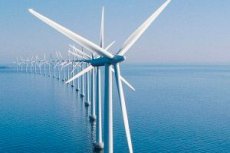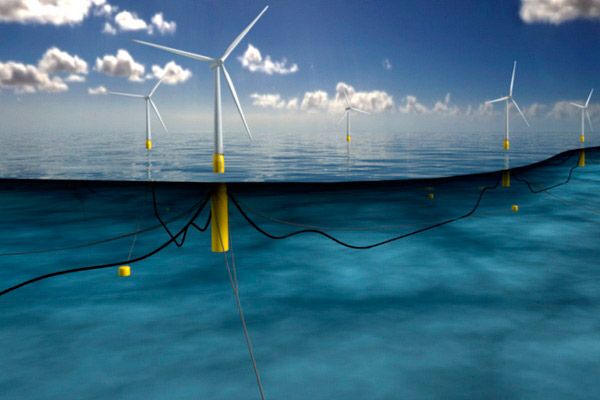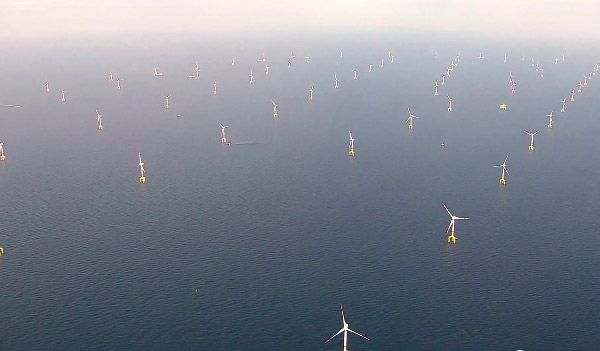New publications
First floating wind farm to be installed in Scotland
Last reviewed: 02.07.2025

All iLive content is medically reviewed or fact checked to ensure as much factual accuracy as possible.
We have strict sourcing guidelines and only link to reputable media sites, academic research institutions and, whenever possible, medically peer reviewed studies. Note that the numbers in parentheses ([1], [2], etc.) are clickable links to these studies.
If you feel that any of our content is inaccurate, out-of-date, or otherwise questionable, please select it and press Ctrl + Enter.

The first thing that comes to mind when you hear the words "floating wind turbine" is the huge installations on the seabed, which can already be found in a number of countries. However, there is a slight difference, conventional wind power plants are located at a shallow depth and are fixed to the seabed. Such turbines have become widespread in the last few years, but floating wind turbines are attached with a cable and are not fixed to the seabed, until recently such turbines were used only in the testing process.
But this is likely to change in the near future, as floating wind farms are capable of operating at greater depths than conventional fixed turbines, and also allow for lower cost wind energy and a larger area of possible installation.
Norway's Statoil recently received approval to test a floating wind farm off the coast of Scotland. The project is expected to produce enough energy to power 20,000 homes and has already been granted a licence to be installed by the Scottish Government.

The installation will take up more than 20 kilometers on the coast of one of the largest ports of the city of Peterhead, which is located in the North Sea, it will include 5 floating turbines, with a capacity of 6 thousand kW, which will produce 135 million kilowatt hours every year. These figures, of course, look insignificant, in comparison with the 10 million kilowatts produced by the British wind farm, but the fact that the turbines will operate at a depth of more than 100 meters is of great importance.
The UK Emissions Reduction Company noted that by installing a floating wind farm, 8 to 16 million kilowatts of wind power could be generated for the country's needs over 35 years. Experts also believe that within 10 years, turbines could be significantly improved and energy production costs could be reduced (less than $150 per 100 kilowatts, while wind power currently costs more than $200).
The head of the World Wildlife Fund noted that the introduction of a floating wind farm will allow for the production of environmentally friendly energy for the needs of the population. If the project receives the necessary political support for the development of various renewable technologies, then in 15 years Scotland could become the first country in the European Union to fully meet the energy needs of the population through renewable energy sources.

The statement puts Scotland in competition with Sweden, whose government aims to become the first country independent of fossil fuels. The Swedish government announced its moves last month.
Next year, the country's budget has allocated more than 500 million, which will go towards renewable energy sources; in addition, part of the money will be spent on measures to prevent climate change.
According to the Bloomberg news agency, a year ago, 2/3 of the country's electricity production was converted to low-carbon and clean sources, and Sweden also intends to reduce harmful emissions by 40% in 5 years.
